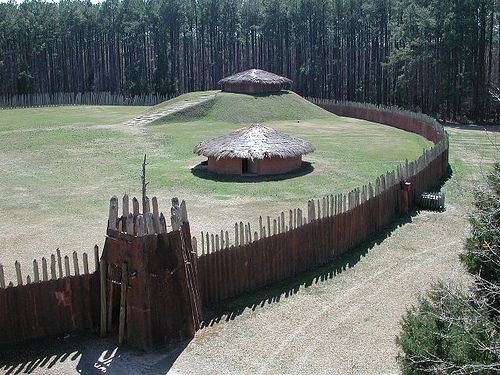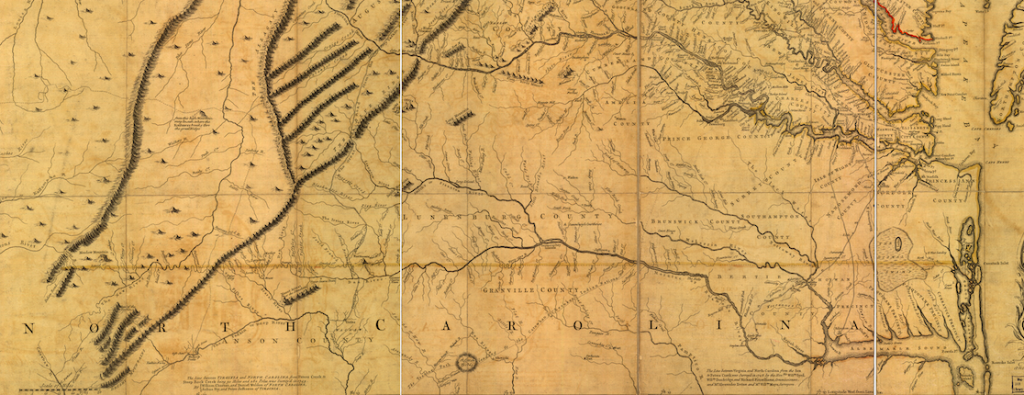Pre-Colombian History in the Upper-Piedmont

During the end of the last Ice-Age (10,000-8,000 B.C) the glacial wall receded, warming the climate, which allowed lush forests to replace ice and snow. Nomadic peoples, known broadly as Paleo-Indians, who once roamed the sparse glacial landscapes moved less frequently in seasonal camps (8,000-1,000 B.C. ). As time progressed (1,000 B.C.-A.D. 1550), their cultures morphed and the native peoples settled permanently, establishing agrarian societies. Multiple tribes settled in what is now North Carolina’s Upper-Piedmont, including the Catawba, the Cheraw, and the Keyauwee. Tribes in the piedmont culled forests, actively managing the landscape, and inhabiting a natural world far different from the one Europeans first encountered.
https://www.ncmuseumofhistory.org/american-indian/handouts/nc-prehistory
European Involvement in the Upper Piedmont
After the arrival of Europeans in North Carolina (around 1520), countless natives died as the result of the introduction of foreign illnesses, much like the rest of the continent, desomating entire communities, and in some cases entire cultures. As a result, the landscape regressed as forest grew back untamed. As European, particularly English, settlement increased (1680-1750), settlers inched westward, sparking countless conflicts with native tribes, these skirmishes are known broadly as the North Carolina Indian Wars (1663-1763). Amid the conflict, around 1750, Scotch-Irish, Germans, English and Welsh settled in the Upper Piedmont, known then as the Backcountry. The rampant, dense forests quickly became a patchwork of settlements and farmland.

The Regulator Movement
In 1764, outcry poured against unfair taxation and governmental corruption toward the royal governor of North Carolina, William Tryon. A majority of the dissidents hailed from the upper-piedmont and came to be known as Regulators; the Regulator Movement irreparably shaped the political landscape of colonial North Carolina. Ravenous mobs attacked despised colonial officials, and Regulator militias organized. In May of 1771, tensions culminated during a parlay West of Hillsborough into a two-hour skirmish known as the Battle of Alamance. The skirmish resulted in a defeat for the Regulators, twelve of the leaders were tried for treason and swiftly executed, while many more were pardoned by King George III.
https://www.ncpedia.org/history/colonial/regulator-movement
The Founding of Guilford County
During the chaos of the Regulator Movement, Guilford County was founded. In 1771, named after Francis North, the first Earl of Guilford, the North Carolina Colonial Legislature created Guilford County to assert tighter governmental control over the Upper-Piedmont. In 1774, the colonial government built the county’s first courthouse and jail, centralizing power within the county; however, as more colonists migrated to the Upper-Piedmont a new rebellion brewed, not just concerning corruption in North Carolina but surrounding representation and ultimately an independence from the British crown itself.
https://northcarolinahistory.org/encyclopedia/guilford-county-1771/